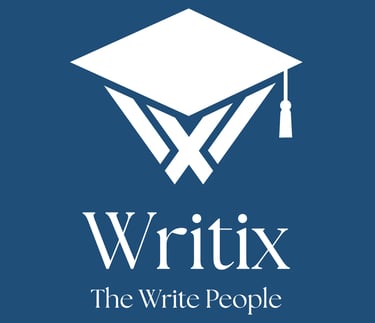Regulatory Writing 101: How to Prepare FDA and EMA Submissions That Don’t Get Rejected
Learn how to write regulatory documents for FDA & EMA that meet approval standards. Expert tips + regulatory writing services from Writix.
TECHNICAL WRITING SERVICES
Dr. Kumkum, P.hD, Medical Biotechnology
7/21/20252 min read


Submitting to regulatory agencies like the U.S. FDA (Food and Drug Administration) and EMA (European Medicines Agency) is a pivotal step in bringing biotech and healthcare innovations to market. But it's also where many companies hit costly roadblocks. From investigational new drug (IND) applications to clinical study reports (CSRs) and product labeling, one small documentation error can derail approvals and delay product launches.
At Writix, we specialize in regulatory writing that meets the precise requirements of global agencies. This guide walks you through the essential components, common pitfalls, and best practices to ensure your submissions don’t just get reviewed, they get approved.
Understanding Regulatory Writing in Healthcare and Biotech Regulatory writing refers to the preparation of documents required by regulatory bodies to evaluate a product’s safety, efficacy, and compliance. These documents are not just summaries; they are legal, scientific, and strategic texts that must withstand rigorous scrutiny.
Key documents include:
Investigational New Drug (IND) applications
New Drug Applications (NDAs)
Common Technical Documents (CTD) for EMA
Clinical study protocols and Clinical Study Reports (CSR)
Risk management plans and pharmacovigilance documents
Investigator brochures (IBs)
This highly specialized form of writing demands not just subject expertise, but regulatory knowledge, document structure mastery, and a deep understanding of agency expectations.
Explore our Regulatory Writing Services
FDA vs. EMA: Know the Differences While both agencies share the goal of ensuring public safety, their documentation expectations can differ significantly.
FDA submissions focus heavily on risk-benefit analysis, structured data presentation, and clinical relevance.
EMA requires more harmonized CTD format submissions and places additional emphasis on long-term safety data and post-marketing studies.
Understanding the nuances between the two can help tailor your documents and avoid unnecessary back-and-forth.
Pro Tip: If submitting to both agencies, plan for modular documentation where core data is consistent, but region-specific requirements are customized.
Common Reasons Regulatory Submissions Get Rejected
Inconsistent Data Across Documents: Tables, summaries, and narratives must align precisely.
Poor Writing Clarity: Ambiguities or overuse of jargon can obscure vital information.
Inadequate Justification: Every claim must be backed by data and clear rationale.
Outdated Guidelines: Agencies frequently update requirements—failing to adhere to the latest standards is a common cause for rejection.
That’s why many firms turn to professional medical documentation services to eliminate guesswork.
The Anatomy of a Compliant Submission Here’s what top-tier regulatory documents typically include:
Executive Summary: Clear articulation of product scope and objectives
Clinical Data Sections: Structured per ICH guidelines (E3 for CSRs)
Risk-Benefit Assessment: Supported by statistical data and patient impact
Appendices: Protocols, ethics committee approvals, site listings, etc.
Every section must be coherent, complete, and formatted to agency specifications. Using templates is helpful, but customization is key.
Collaborating with Cross-Functional Teams Regulatory writing isn’t a solo effort. It involves close collaboration with:
Clinical trial managers
Biostatisticians
Medical affairs
Quality assurance (QA)
Legal and regulatory strategists
A skilled writer acts as a translator between these groups, ensuring language, logic, and compliance align.
At Writix, our technical writing team bridges these silos, turning siloed insights into unified, submission-ready content.
Staying Ahead with Regulatory Intelligence Regulatory landscapes evolve rapidly. Staying informed about:
New EMA or FDA guidances
Brexit implications on EMA procedures
Digital submission standards (eCTD)
...can prevent costly revisions. Subscribe to agency newsletters and consult with regulatory compliance writing experts who stay current.
Precision Writing, Approved Faster Regulatory writing is about more than grammar and formatting, it’s about strategy, compliance, and credibility. In biotech and healthcare, every word must serve a purpose.
Whether you need help drafting your first IND or want an expert pair of eyes on your EMA submission, Writix is here to help. Our technical writers for life sciences combine scientific rigor with regulatory insight, ensuring your documents make it across the finish line, faster, and with fewer revisions.
Address: Writix, Level - 5, The Iconic Corenthum, Tower- C, A-41, Sector 62, Noida, Uttar Pradesh 201301
Phone : +91 9289469111
2025 Thewritix. All Rights Reserved.
Blogs
Social
Research Consultation Services
Journal Publishing Assistance


We Accept

Add On Services
Who we are?
Our Team
